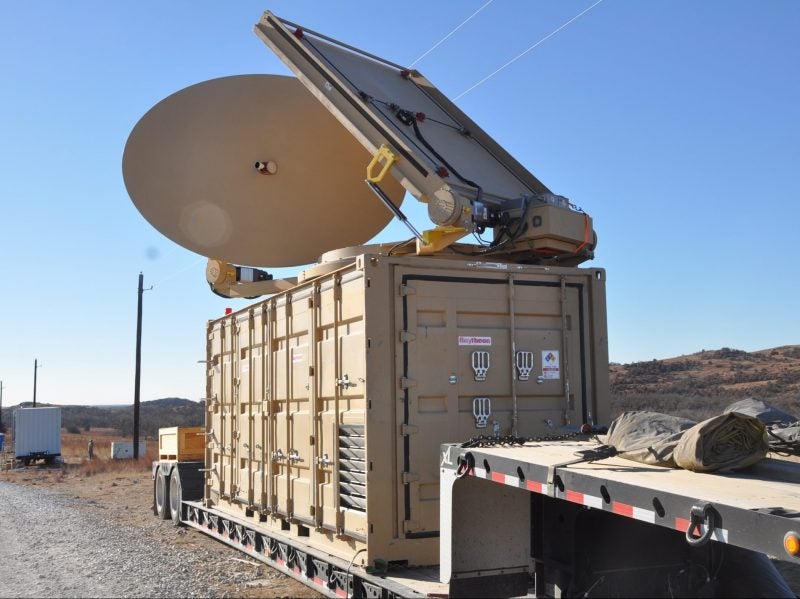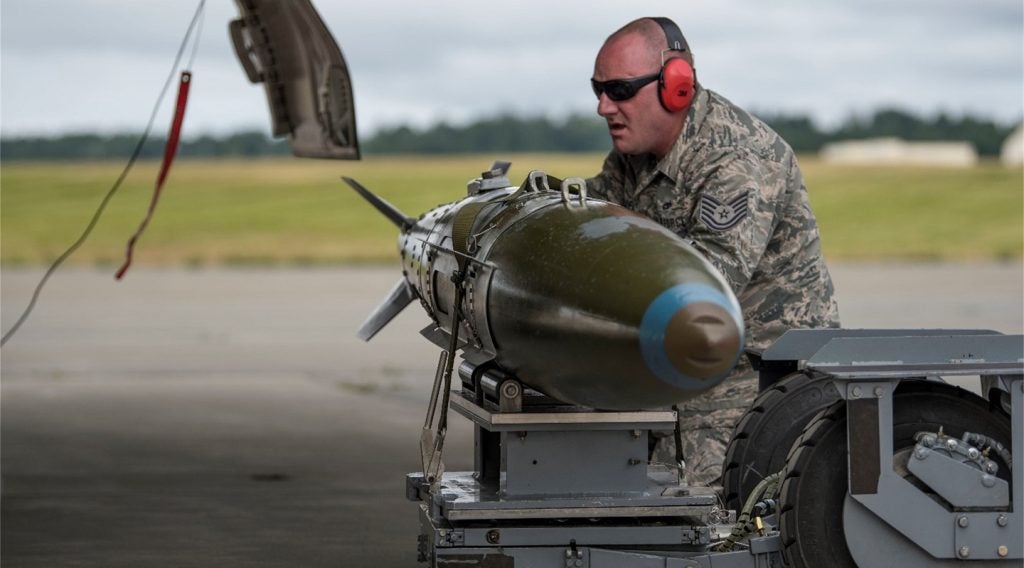
The US Air Force (USAF) has contracted Raytheon to develop and deliver a prototype high-power microwave (HPM) system for destroying hostile drones.
Raytheon has previously demonstrated similar systems for the USAF and US Army.
Raytheon’s HPM targets and disables drone using directed energy rather than kinetic force, and uses a wide beam to attack multiple unmanned targets at once. This could make the weapon effective against swarms of drones rather than a single, larger target.
Raytheon has contracts to develop directed energy and laser-based counter-UAS systems which are being tested as a tool to defend military bases. Using directed energy to destroy a target is more cost-effective than conventional missiles which often cost much more than the target.
Raytheon Advanced Missile Systems vice president Dr Thomas Bussing said: “There’s more than one way to defeat a drone.
“We are delivering the world’s first defensive directed energy systems that can be used alone or in tandem to defeat enemy drones at the speed of light.”
How well do you really know your competitors?
Access the most comprehensive Company Profiles on the market, powered by GlobalData. Save hours of research. Gain competitive edge.

Thank you!
Your download email will arrive shortly
Not ready to buy yet? Download a free sample
We are confident about the unique quality of our Company Profiles. However, we want you to make the most beneficial decision for your business, so we offer a free sample that you can download by submitting the below form
By GlobalDataThe company’s work in the field includes the development of HPM and high energy laser (HEL) systems which can be used independently or together to ensure a target is destroyed.
On its website, Raytheon says: “One of the most effective counter-unmanned aerial system defences is a high-power microwave beam that disrupts the internal systems of a drone so it can’t fly. This technology helps protect US military bases and naval ships.”
Earlier this year the US Navy used a similar directed energy weapon to destroy an Iranian drone in the Strait of Hormuz, proving the viability of the weapons in a military engagement.
Whereas laser and conventional weapons physically destroy targets, directed energy weapons use radio and other frequencies to disrupt a drone’s connection with its operator causing it to land safely automatically or plunge from the air.






